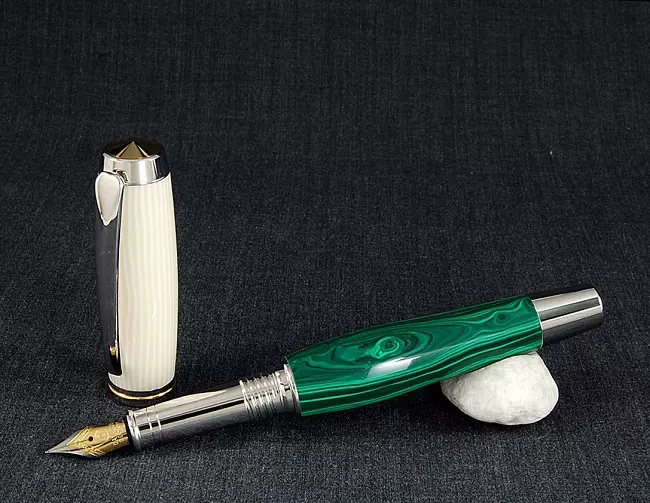The harder side of milk
Most of us drink milk on a daily basis, and though it's no surprise that this wonderful and nutrient-dense fluid can be a useful ingredient for making a huge variety of foods, it might be more of a surprise that it can also be turned into hard objects, such as billiard balls, pens or buttons...
Here you can see a fountain pen with casein cap(By 76Winger - Flickr: DSC_0149, CC BY-SA 2.0, https://commons.wikimedia.org/w/index.php?curid=23213318)
Nowadays, as we encounter synthetically created objects most of the times in our lives, we might be surprised that something like the ordinary cow's milk we drink in the mornings can be turned into usable objects. But in fact an ivory-like, pale colored material - called casein - was regularly used for making pens, buttons, and even billiard balls.
Casein was made out of milk, and it was formed using molds. When making buttons, they used cylinder-shaped molds, and when its inner side was not even, the final result became a zig-zagged smaller cylinder. This was then cut into thin "disks", and when the holes were drilled into them, the buttons were ready.
A fun fact is that the casein cylinder, when being cut into disks, smelled really awful, up until a few hours, when the odor was usually gone. This means that no matter how awful the product smelled in the making, people could use it "safely" later on, because luckily, the smell was quickly gone once it contacted with air.
Although creating a really nice casein object with smooth - and not cracked - surface at home is almost impossible, we can make a little experiment. It can be quite interesting to see the milk turning into "stone", but be prepared for a little mess and a not-so-little amount of unpleasant smell. The reason the milk becomes solid is actually that a protein found in it separates from the other molecules.
You will need the following ingredients and objects for the experiment:
Hot milk
4-6 teaspoons of vinegar
Paper towels
A mug
A strainer
And here's how it's done:
Start warming a mug of milk until it's hot and steaming, but don't wait until it starts boiling.
Pour the milk into a mug, and add 3 teaspoons of vinegar to each deciliters of milk. This is the point where you can see the milk dividing into two separate parts: a liquid one, and an other, more solid, soft and lumpy one.
Wait until the milk cools down a little, then use a strainer to get the solid white parts out of the liquid. You can use paper towels to get rid of the excess fluid.
What you get is a clay-like material, that you can turn into basic shapes.
After two days of drying, your casein "sculpture" will be ready, and firm as a stone.
Anita Diós
July 2018
